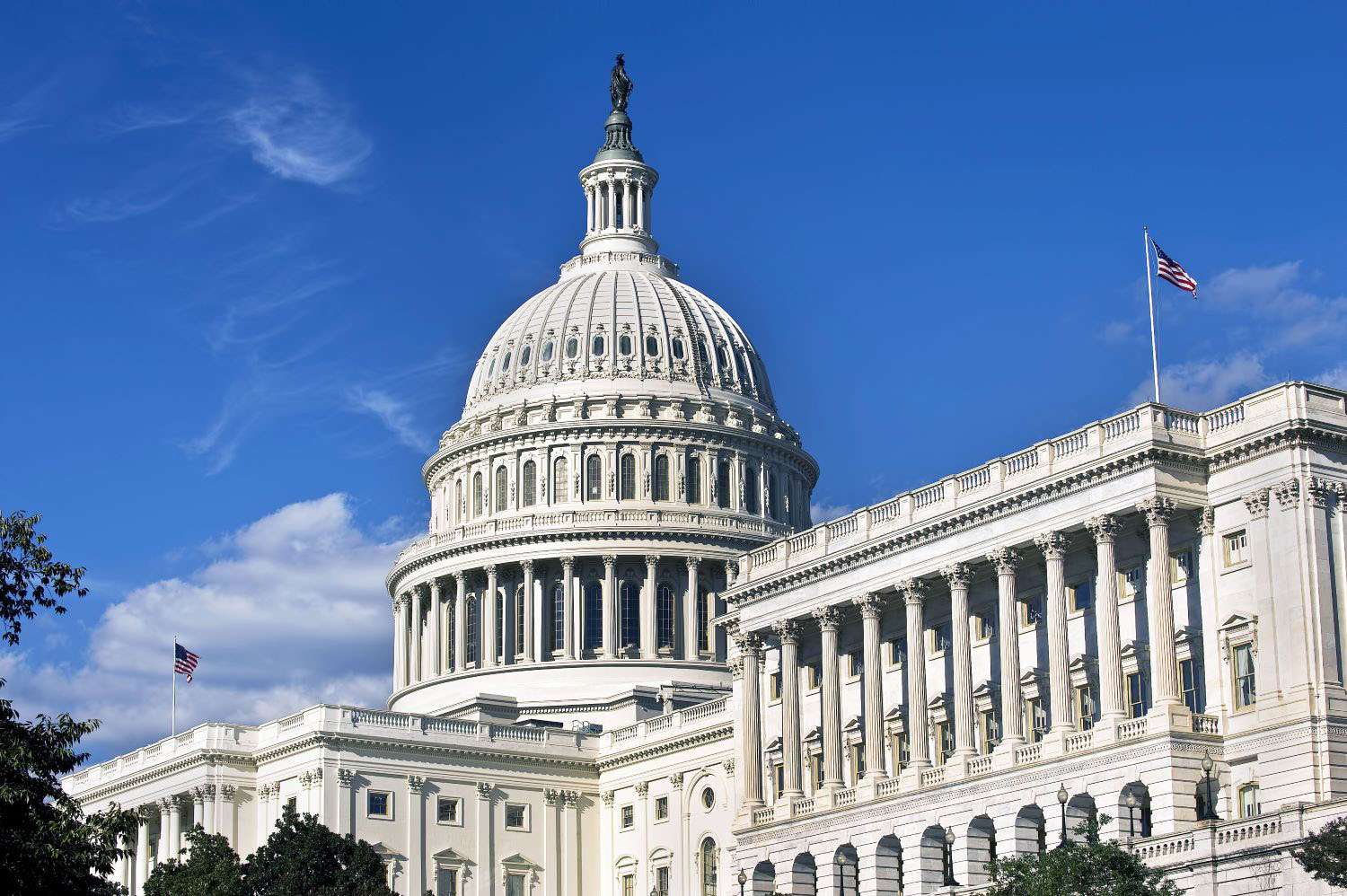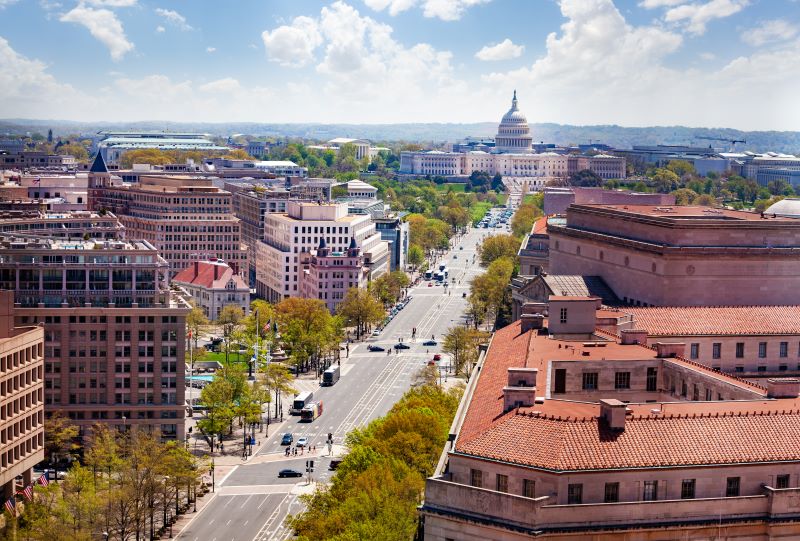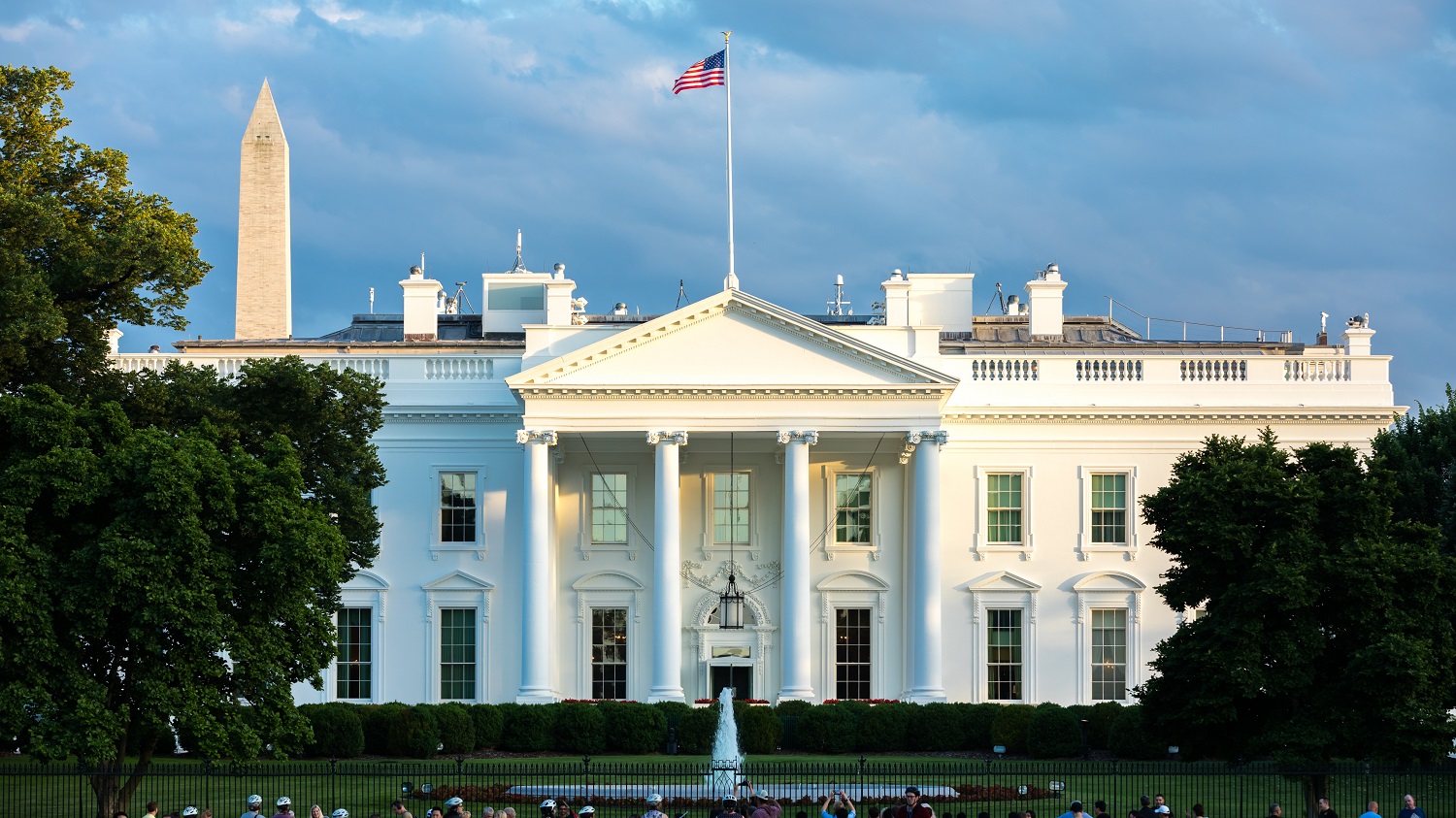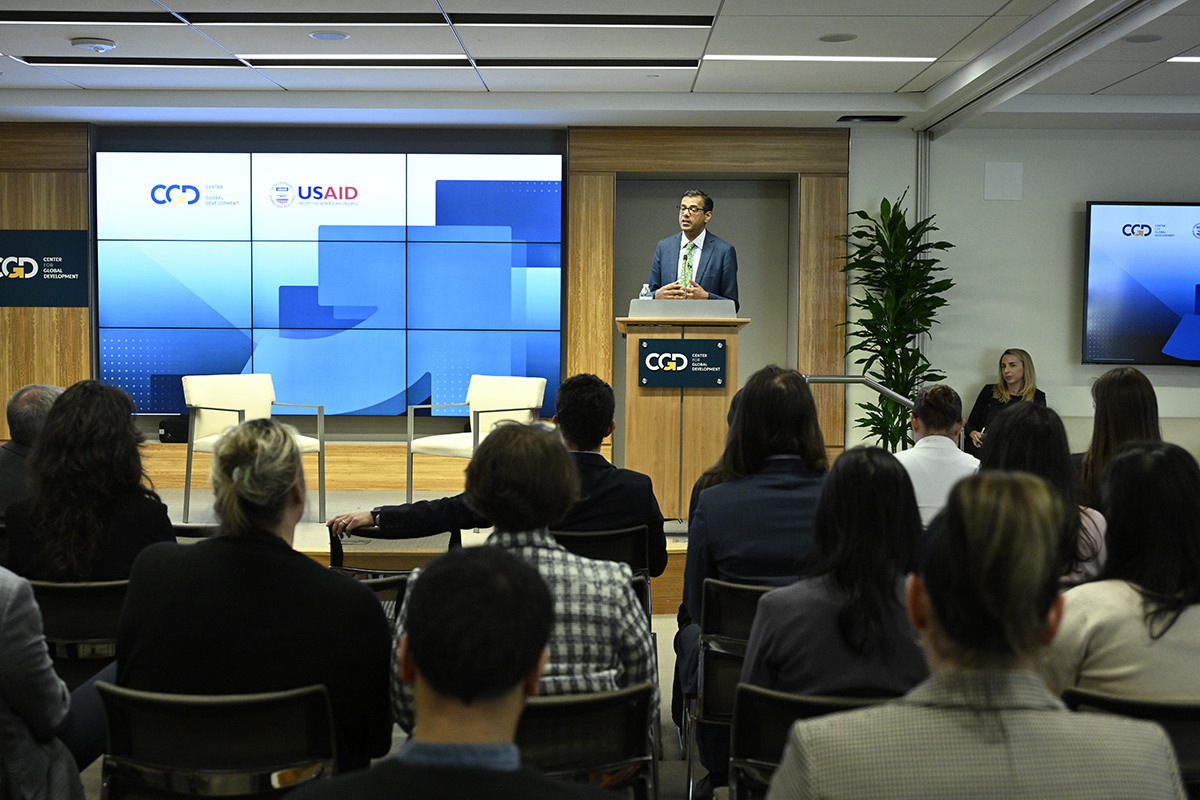Recommended
We regularly track the US budget and appropriations process—seeking to glean insight into the development priorities of Capitol Hill and the administration (while reading heavily into the interplay between them). In recent years, our blog posts have tended to be sprawling affairs—albeit with colorful charts and tables to break up the text. On more than one occasion, we've contemplated a timelier and more concise alternative. But alas, with the FY24 appropriations process concluding nearly six months behind schedule and almost two weeks after the release of the president's FY25 budget request, our pithy, quick-turnaround recap was not to be.
Instead, we hope you'll enjoy this belated analysis of various funding levels and related provisions included in the final FY24 State and Foreign Operations spending bill alongside those in the FY25 budget request.
In the event you want to dig in further, here's where to look.
FY24 Appropriations:
-
Minibus text (State and Foreign Operations spending is Division F)
-
Division F Explanatory Statement (earlier Senate Report and House Report)
FY25 Budget Request:
-
Department of State and Other International Programs Appendix
-
Congressional Budget Justifications:
Capitol Hill curbs IFI ambition yet delivers authorization with sizeable impact
We previously remarked on the administration's ambition in its FY24 ask for the IFIs. The final FY24 spending package included funding to keep the US current on most of its existing commitments to multilateral development banks and funds—though it frustratingly shortchanges the World Bank's International Development Association (IDA) on the eve of the vital concessional window's next replenishment. (The United States still has time to catch up by making a slightly larger final payment toward its IDA20 pledge in FY25—essential to preserving strong US leadership at the institution and ensuring the world's poorest countries have access to an economic lifeline.) But working under a tight topline, lawmakers weren't looking to entertain new priorities or significant increases. Arguably, the measure's biggest victory for Treasury's international programs required no new appropriations—instead coming in the form of long-sought authority for the US to lend up to $21 billion to the IMF's Poverty Reduction and Growth Trust (PRGT) Fund. The Biden administration first urged Congress to greenlight lending in the wake of the IMF's 2021 issuance of Special Drawing Rights (SDR). The SDR allocation, though backed by the administration, was criticized by some lawmakers for being poorly targeted and providing funding to countries subject to US sanctions and other regimes with terrible track records—all of which contributed to lingering frustration on Capitol Hill. That frustration, paired with skepticism about the IMF's Resilience and Sustainability Trust (once a potential destination for the financing), meant the ask languished even after lawmakers provided appropriations to support the lending. Finally securing authorization means Treasury can bolster the PRGT's ability to provide low-income countries zero-interest financing—which has been in high demand since the pandemic and amid global shocks exacerbated by Russia's invasion of Ukraine.
In the category of boring but important, Congress approved a five-year extension of US participation in the IMF's New Arrangements to Borrow—a supplemental fund that serves as a backstop for the IMF's general resources.
Facing new discretionary spending limits (part of the deal to lift the debt ceiling last May), the president's FY25 budget request for multilateral assistance managed by Treasury isn't as sweeping as the one released last year. Though the reduction also reflects a decision not to request Green Climate Fund money through Treasury, instead seeking mandatory spending to fulfill its latest pledge to the multilateral climate fund. We'll be monitoring the ask for $75 million and authorization for the US to subscribe to a capital increase at the Inter-American Development Bank's private sector arm—a repeat from FY24. The administration has indicated it strongly supports the IDB Invest capital increase but will need Congress to ensure it can deliver. As for new asks, the latest budget request also seeks authorization and $50 million for an initial payment to subscribe to the US share of the European Bank for Reconstruction and Development general capital increase.
While (somewhat unusually) not included in Treasury's ask, the request seeks more than $750 million to support the World Bank's portfolio guarantee program and just under $250 million for World Bank-administered trust funds and financial intermediary funds tackling global challenges, which could include those working to strengthen pandemic preparedness, increase food security, and support economic opportunities for refugees and host populations.
Significant cuts to core bilateral assistance could yield tough choices
USAID and the State Department's core bilateral economic assistance accounts—Development Assistance and the Economic Support Fund—were each dealt a roughly 10 percent cut in FY24. This is a particular blow given the administration had sought sizeable increases to both accounts, citing the need to bolster global health security in the wake of the COVID-19 pandemic, address migration in the Western Hemisphere, strengthen partnerships in the Indo-pacific, and respond to challenges like food insecurity. Instead, the steep reductions will force difficult trade-offs among the wide range of program areas these accounts support—from agriculture and digital technology to governance and private sector engagement.
We noted that the spending bill directs $15 million in bilateral (and international security) assistance be used for impact evaluations of US-supported foreign aid programming—building on a previous directive that allocated funds for "ex-post" evaluations. While we're generally of the view that these bills and accompanying explanatory statements carry too many directives and reporting requirements—especially when accounting for provisions in the draft reports from both chambers—we'd be hard-pressed to argue against a set-aside for rigorous evaluation.
Under the administration's FY25 request, these fundamental, broad-reaching accounts would return to roughly FY23 levels—with a slight increase in development assistance and a modest reduction in ESF.
Humanitarian aid hangs on but can't keep pace with growing needs
Last year, the world saw humanitarian needs reach record levels—as new crises emerged amid protracted ones. The United States has long been a leader in humanitarian response, providing generous support to populations facing the direst of circumstances. Without real growth in base humanitarian funding, emergency supplemental aid has been vital, enabling the United States to continue to provide life-saving assistance across many parts of the globe. Appropriators shielded key humanitarian accounts from cuts by providing some emergency funding to help shore up USAID's International Disaster Assistance and the State Department's Migration and Refugee Assistance. Still, without a sizeable funding boost—like the one included in the Senate-passed national security supplemental—the growing schism between resources and need could soon be glaringly apparent.
Reduced global health spending with a finger pointed elsewhere
Congress provided less global health assistance than in recent years, though appropriators highlighted lower contributions from other donors to the Global Fund to Fight AIDS, Tuberculosis, and Malaria as a key culprit. In March 2022, the United States announced an intended pledge of $6 billion to the global health multilateral over three years, agreeing to provide a $1 match for every $2 contributed by other donors. But in the face of competing priorities, other donors haven't delivered, pushing the US to revise down its contribution from $2 billion to $1.6 billion. The bill includes a slight increase in the US contribution to GAVI, providing $300 million—up from $290 million the previous year. While modest, the boost comes at a critical juncture for the vaccine alliance, which has a new leader at the helm and a replenishment on the horizon, as it works simultaneously to recover ground lost during the COVID-19 pandemic and prepare for future global health threats.
The spending package carries a one-year reauthorization of the President's Emergency Plan for AIDS Relief (PEPFAR). Select PEFPAR provisions expired in October after the program—which has demonstrated incredible impact and enjoyed strong bipartisan support—became caught in political crossfire. However, the short-term compromise seems unlikely to quell concerns about future support for the signature program.
The president's FY25 request for global health is broadly in line with the level of funding provided by Congress in FY24.
Fairly stable funding for DFC, but a critical fix looks likely to wait until reauthorization
The administration and Congress appear largely in lockstep with regard to funding for DFC. Though the agency will see a modest reduction in its program funding in FY24, appropriators fulfilled the administration's request for a slight increase in DFC's administrative expenses. In the new spending package, lawmakers also provided DFC the authority to use the fees it charges clients to pay project-specific transaction costs without needing to count them against its administrative budget, a flexibility enjoyed by its predecessor, OPIC. Appropriators also boosted DFC's annual lending limit to $12 billion.
With reauthorization on the horizon, the administration appeared to be keeping its powder dry rather than re-upping past proposals to fix the illogical budget treatment of DFC's direct equity authority via its FY25 budget request. Nevertheless, an equity scoring fix remains a priority for DFC and its champions on Capitol Hill.
The Millennium Challenge Corporation eyes the future but must weather another big rescission
In FY24, for the third year running, appropriators opted to rescind a portion of MCC's unobligated balances. The latest spending bill claws back $475 million—for those keeping track, that brings the total rescissions from the small agency to more than $1 billion in just three years. As we've noted before, lawmakers often have to make tough allocation decisions when working under spending caps. Nevertheless, it remains a worrying trend for an aid agency whose model relies on developing evidence-informed, multi-year grant agreements with heavy involvement from partner countries.
Meanwhile, the agency is sincerely hoping for congressional action on two fronts: 1) passage of legislation that would provide a modest expansion of its country candidate pool and 2) confirmation of new private sector members of the agency's board—to ensure it can maintain the quorum required to make decisions. On the latter, appropriators provided MCC a bit of a reprieve, again extending the term of the only remaining private sector member (former Florida Representative Ander Crenshaw) through the end of the calendar year (unless another member is in place sooner).
In slightly better news, the administration's FY25 budget request would maintain steady funding for MCC (with no requested rescissions). Under the auspices of out-competing China, the Department of State and USAID are seeking mandatory funding, including $2 billion over five years for international infrastructure investments. If those resources were to come to fruition, MCC would receive a $200 million transfer. Still, given the limited traction that proposals for new mandatory funding have found on Capitol Hill, this may be little consolation.
--
In the end, lawmakers put the FY24 appropriations process to bed (save the lingering potential for a national security-oriented supplemental package) just in time to start again with FY25. Committees on both sides of the Capitol are already filling their calendars with budget hearings. We'll be watching closely for hints of what's to come.
Disclaimer
CGD blog posts reflect the views of the authors, drawing on prior research and experience in their areas of expertise. CGD is a nonpartisan, independent organization and does not take institutional positions.
Image credit for social media/web: Chairman of the Joint Chiefs of Staff Flickr CC BY 2.0 DEED








